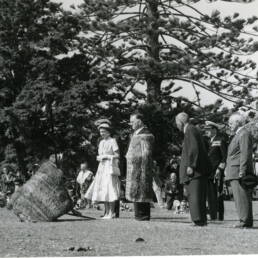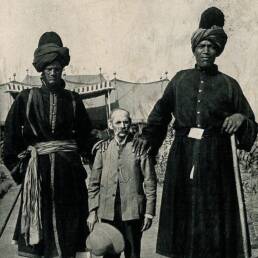‘Etthara Jenda’- a song that has already secured a whopping 32M views on YouTube in the past 6 months. It paid tribute to 9 prominent personalities out of whom there was only a single woman, and probably for good reasons. An article connecting the theme of RRR and Chennamma queens.
S. Rajamouli’s RRR became one of the highest grossing films ever made in India. The heavily fictionalized story depicted the life of 2 freedom fighters – Alluri Sitarama Raju and Komaram Bheem, who in reality belonged to two different timelines but in the movie merged into one.
The theme is coincidentally much alike the Chennamma queens – Keladi and Kittur, belonging to two different timelines and aptly signifies the abbreviation of RRR – Roudram Ranam Rudhiram (Rise Roar Revolt).
Somashekara Nayak, the ruler of Keladi, in the 17th century, met a young Chennamma, the daughter of a Lingayat merchant, at a fair at the Rameshwara temple. Her pearl-like complexion, bright eyes and alluring beauty mesmerized the king at once.
Despite numerous objections to her common background by his advisors, Nayak married her. Though they didn’t have an offspring, young Chennamma’s boon came in the form of receiving royal education in politics and administration, weaponry, warfare, arts, and literature.
When Nayak, a man of sudden passion, moved in with one of his royal dancers and fell sick because of her ill intentions to keep the king on drugs, Chennamma became the temporary de facto ruler of the state.
The Sultan of Bijapur saw this as an opportunity to finally conquer his family’s century old dream. He had sent an army and captured Keladi but was unable to capture the queen as she had foreseen the danger and taken shelter in Bhuvanagiri fort, protected by dense forest and ravines.
When the Bijapur forces ventured into the forest and attempted to capture her, Chennamma’s army ambushed and overwhelmed the entire enemy force. Chennamma returned to Keladi and took charge of the throne, triumphant and in her own right – it was the start of her ‘Rise’.
After the death of Chhatrapati Shivaji who dominated the Deccan for 35 years, Aurangzeb turned his journey of conquest towards the Southern Indian landscape. During this time, Rajaram, the 19-year-old son of Shivaji, was named the Maratha king.
Rajaram knew that fighting against the Mughal army was a certain death sentence. Being aware that his father once made a truce with Chennamma, he pleaded with the queen for his protection. Chennamma didn’t hesitate to fulfill her ‘Rajadharma’.
Against the advice of her ministers and putting her kingdom at risk against Aurangzeb’s wrath, she offered protection to Rajaram. Her ‘Roar’ had reached the ears of the Mughal king and now Keladi was waiting for its utter demolition.
A significant factor behind the great Alexander’s army’s failure to capture the Deccan landscape was the relentless monsoon rain and the innumerable bugs and diseases it generated. The fate was worse for the Mughals as Chennamma’s army kept on piling guerilla attacks in such trying conditions.
All this time while resisting against the mighty Mughal army, Chennamma had provided a safe passage to Rajaram in Jinji. Upon hearing that Rajaram had fled, and he had lost a considerable number of forces to a distraction, Aurangzeb redirected his remaining force. Keladi survived.
The story of ‘Revolt’, however, goes more aptly with another Chennamma, the queen of Kittur during the early 19th century, who appeared briefly in the list of freedom fighters in the song ‘Etthara Jenda’.
Following the death of Mallasarja Desai, the king of Kittur in 1816, and subsequently losing their only son in 1824, the queen of Kittur adopted a son named Shivalingappa with the hope of making him the rightful heir to the throne of Kittur.
This annoyed the British Raj greatly. According to the Doctrine of Lapse, introduced by Lord Dalhousie, adopted children of native rulers were not allowed to be named their successor. Hence Shivalingappa’s exile was ordered.
Despite Chennamma pleading her case to the Governor of Bombay, her request was turned down. The British force made an attempt to plunder the treasury of Kittur with more than 20 thousand men and over 400 guns.
However, it was not enough in front the bravery of the queen who was an expert in sword fighting, horse riding and archery. The Britishers suffered a heavy defeat at the hand of the queen’s forces, losing some of their key men for life and as hostages.
To avoid further destruction, Chennamma agreed to return the hostages in exchange for a peace truce. However, the queen failed to realize that she was falling for a trap. The Raj attacked Kittur once again, this time with much larger forces from Mysore and Sholapur.
The queen fought valiantly but was ultimately outnumbered, betrayed by her own men, and defeated. Chennamma was finally captured and imprisoned at the Bailhongal Fort where she remained till her last days.
Even for a brief period, RRR becomes a stark reminder that sometimes it takes more than just an isolated statue to relive the history of rise, roar, and revolt that our country had experienced through long forgotten characters.
Sources:
Archana Garodia Gupta, “The Queen Who Challenged Aurangzeb”, https://swarajyamag.com/magazine/the-queen-who-challenged-aurangzeb
Shagun Gupta, “Rani Kittur Chennamma: India’s Valiant Freedom Fighter”, https://feminisminindia.com/2017/06/13/kittur-chennamma-essay/




